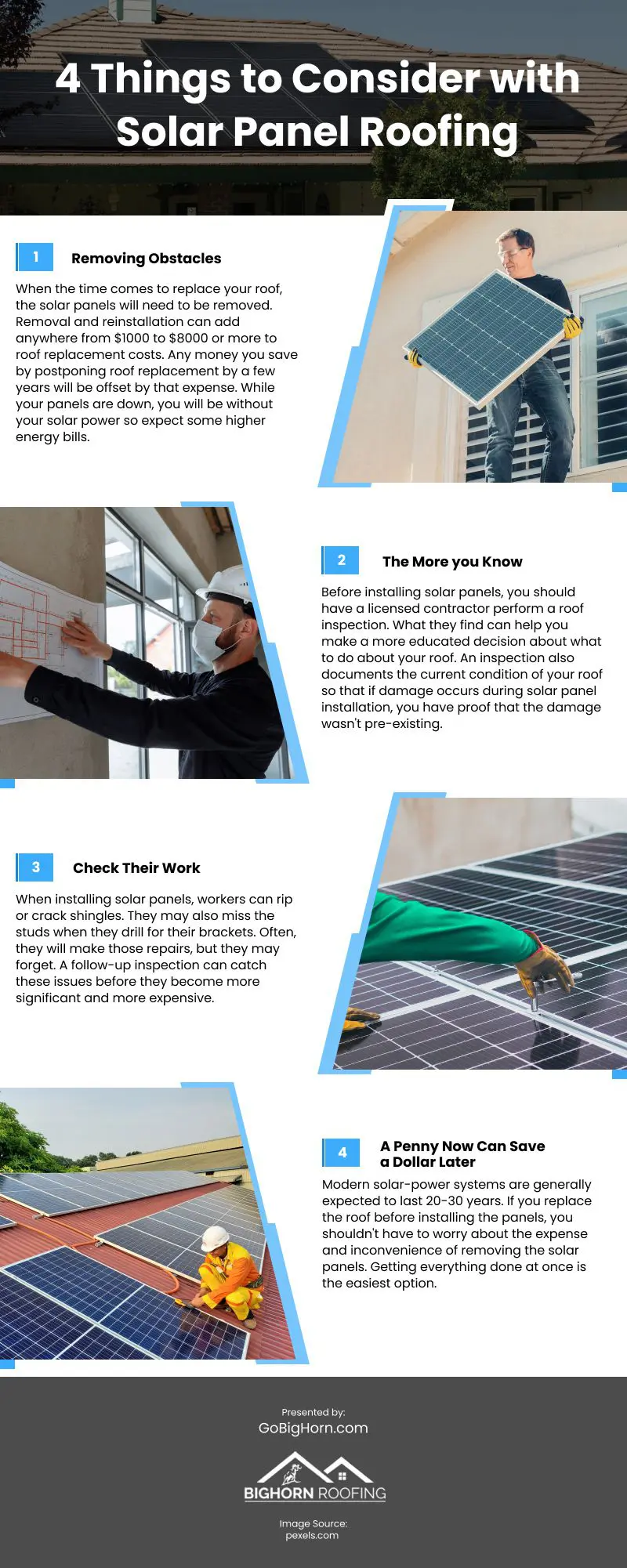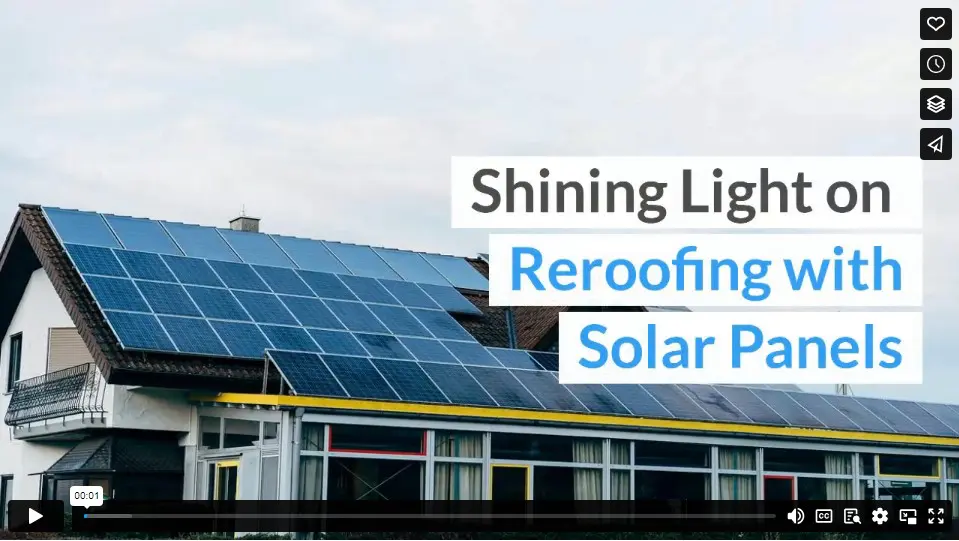With energy costs soaring and ecological concerns at the forefront of many conversations, more and more people are considering adding solar panels to their home or business. Solar can be an excellent investment, but you need to consider how your solar panels affect your roof today and in the future. Your roof is the foundation for your solar panels, so making sure it is sound is vital.
Solar panels are made to play nicely with most roofing products. But what happens if you need significant roofing repairs, or when the time comes for a new roof? Having hundreds of pounds of solar panels attached to your roof can complicate matters. For that reason, ensuring your roof is in the best possible condition before solar installation makes sense. That means inspecting, repairing, or even replacing the roof if necessary.
Removing Obstacles
When the time comes to replace your roof, the solar panels will need to be removed. Because they are fastened to the roofing structure, there is no way to work around them during roof replacement. Due to the required hours and special skills, removal and reinstallation can add anywhere from $1000 to $8000 or more to roof replacement costs. Any money you save by postponing roof replacement by a few years will be offset by that expense.
While your panels are down, you will be without your solar power. That means you can expect somewhat higher energy bills during the work. You will likely also have short outages during the removal and reinstallation, so make sure you prepare ahead of time.
Typically, a solar company will remove the panels, the roofing contractor will perform their work, and the solar experts will return to reinstall your solar. This means coordinating schedules and availability between the different work crews.
The More you Know
Before installing solar panels, you should have a licensed contractor perform a roof inspection. What they find—or don’t find—can help you make a more educated decision about what to do about your roof before the solar panels go up. If they discover issues that need repair, you can take care of them before adding solar panels to the mix. If they determine that your roof is failing or nearing the end of its expected life, you should strongly consider replacing your roof before the solar panels go up.
A roofing inspection also documents the current condition of your roof so that if damage occurs during solar panel installation, you have proof that the damage wasn’t pre-existing. This can help if you need to have the solar company repair issues caused by their work.
Check Their Work
After your panel installation, a follow-up roof inspection is a great idea. When installing solar panels, workers can rip or crack shingles. They may also miss the studs when they drill for their brackets, leaving holes that need to be patched or caulked. Often, they will make those repairs, but they may forget. And they are not roofing professionals, so their repairs may not be entirely sound.
A follow-up inspection can catch these issues before they become more significant and more expensive.
A Penny Now Can Save a Dollar Later
Modern solar-power systems are generally expected to last 20-30 years. A properly installed roof with newer technology should last at least that long. If you replace the roof before installing the panels, you shouldn’t have to worry about the expense and inconvenience of removing the solar panels in order to reroof. Getting everything done at once is the easiest option. It does mean more money upfront, but it can save you in the long run.
Putting off roof replacement to squeeze a few more years out of the current roof could mean the replacement costs thousands of dollars more, thanks to the panel removal and reinstallation. If your roof is nearly new, it probably doesn’t make sense to replace it before adding solar. An inspection and taking care of any minor repairs are likely sufficient. But if the roof is aging or needs significant repair work, it can be a smart decision to accelerate replacement by a few years.
Your trusted roofing contractor can also help you determine what roofing materials would be the best choice to match your budget and work well with your solar panels.
When spending thousands of dollars on solar panels, you may feel like spending even more on your roof doesn’t make sense. But if you can do the work now for less because it won’t involve the removal and reinstallation of the panels, it may be the less expensive decision. It will also save you from the inconveniences and worry of having your system taken down and put back up.
Giving your solar panels a solid, warrantied, modern roof on which to sit helps ensure you won’t have to worry about either system for years or even decades to come.
Infographic
Several roofing materials are made to be compatible with solar panels. What transpires, though, if you require extensive roofing repairs or a new roof? Having solar panels attached to your roof that weigh hundreds of pounds may make things more challenging. The roof in its best shape is the ideal time to install solar panels.

Video

